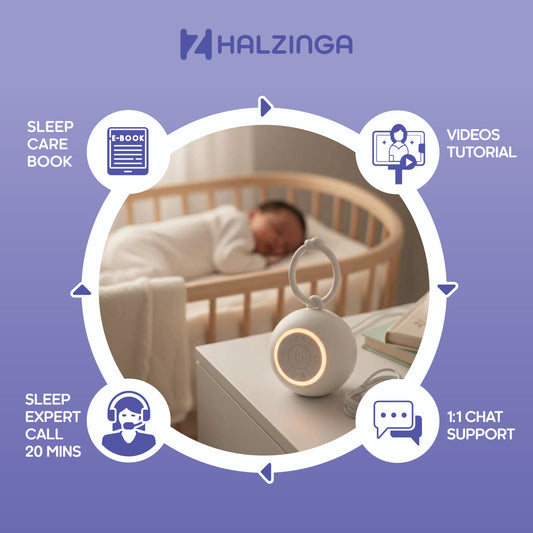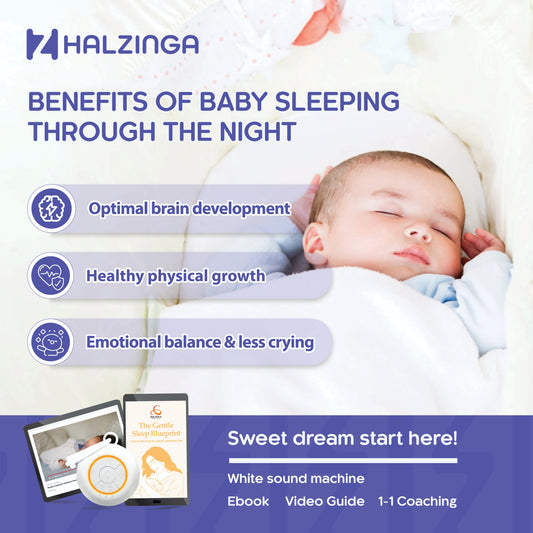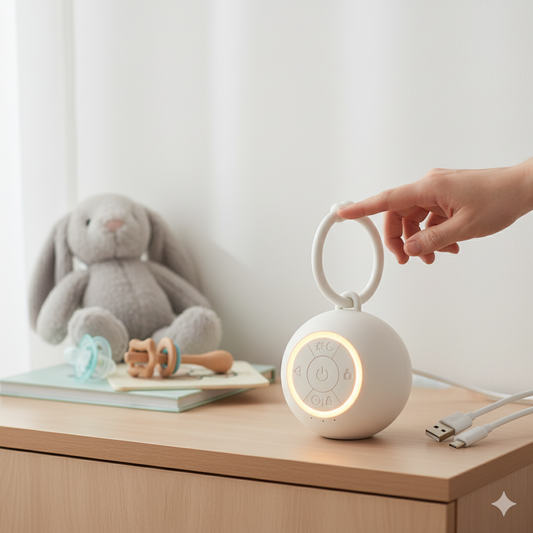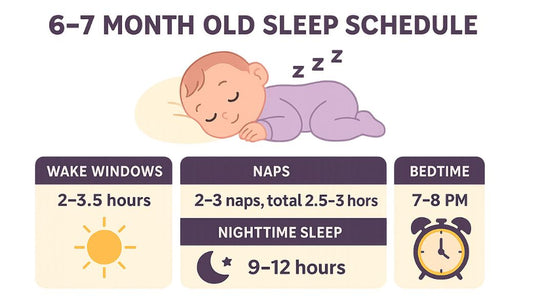
Sleep Training Methods Explained: Ferber, Gentle Approach, and More
For many parents, baby sleep is one of the biggest challenges of the first two years. Some babies naturally fall into predictable patterns, while others wake often, resist bedtime, or rely heavily on rocking and feeding to sleep. Sleep training is a way to teach babies how to self-soothe and fall asleep independently, which can lead to longer, more restful nights for both child and parents. But with so many methods available, from structured approaches like Ferber to gentler, more gradual techniques, it can be hard to know where to begin. This guide will walk you through popular sleep training methods, explain how each works, and help you decide which approach might fit your baby and family best.
What Is Sleep Training?
Sleep training is the process of helping a baby learn to fall asleep on their own and stay asleep longer without relying on external sleep aids like rocking, nursing, or constant soothing. It doesn’t mean leaving your baby alone indefinitely, but rather guiding them toward healthier sleep habits in a way that suits your parenting style and your child’s temperament. Sleep training is typically introduced between four and six months, once babies are developmentally ready to self-soothe, though it can be adapted for older infants and toddlers as well.
The Ferber Method (Check-and-Console)
One of the most well-known approaches is the Ferber method, also called “graduated extinction” or “check-and-console.” This method involves placing your baby in their crib awake and giving them the chance to fall asleep independently, while still offering reassurance at timed intervals.
Here’s how it works:
-
Place your baby in their crib after the bedtime routine, while they are drowsy but awake
-
If your baby cries, wait a set amount of time before briefly checking in (for example, 3 minutes)
-
Increase the intervals between check-ins each time (e.g., 3 minutes, then 5 minutes, then 10 minutes)
-
Comfort your baby briefly without picking them up, then leave the room again
The goal is to give your baby space to learn self-soothing, while still providing reassurance so they don’t feel abandoned. Many families find that sleep improves within a week, though the method requires consistency.
The Gentle Approach (No-Tears Method)
For parents who prefer a slower transition, the gentle approach, sometimes called the “no-tears method”, focuses on gradually reducing a baby’s dependence on external soothing without letting them cry for long periods. Instead of timed check-ins, parents stay more actively involved.
Examples of gentle strategies include:
-
Rocking or feeding your baby until drowsy, then placing them in the crib so they practice falling asleep inside
-
Staying near the crib, patting or shushing until the baby drifts off
-
Slowly reducing the amount of hands-on soothing over time
This method can take longer than Ferber or other structured approaches, but it may be less stressful for parents who are uncomfortable with crying. It works best for families who value a gradual adjustment and can commit to patience and consistency.
The Chair Method
The chair method is a compromise between structured and gentle approaches. Parents sit in a chair next to the crib at bedtime, providing presence and reassurance without direct soothing. Each night, the chair is moved slightly farther from the crib until the parent is eventually out of the room.
This approach helps babies adjust to falling asleep independently while still feeling secure that a caregiver is nearby. The process usually takes one to two weeks, depending on how gradually the chair is moved.
The Pick Up/Put Down Method
This method, popularized by parenting expert Tracy Hogg, is another gentle alternative. Parents pick up their baby when they cry, soothe them until calm but not asleep, then place them back in the crib. If crying continues, the cycle is repeated.
Pick up/put down can be time-consuming, especially in the early stages, but it teaches babies to associate the crib with comfort and rest. It works well for parents who want to be highly responsive while still encouraging self-soothing.
Extinction (Cry It Out)
The extinction method, often called “cry it out,” involves putting the baby to bed and not returning until morning or the next scheduled feeding. The idea is that without external soothing, the baby learns quickly to fall asleep on their own.
While some parents find this method effective in just a few nights, others feel uncomfortable with the level of crying involved. It tends to work best with older infants who are developmentally ready and in families where parents are confident about their decision to use it.
Which Sleep Training Method Is Right for You?
Choosing a method depends on your parenting style, your baby’s temperament, and your comfort level with crying. Consider these questions:
-
How much crying are you comfortable with?
-
Do you prefer faster results or a slower, more gradual process?
-
Does your baby respond better to presence, touch, or space to self-soothe?
-
Can you commit to consistency for at least a week or two?
There’s no single right answer. Some families start with a gentle approach and shift to more structured methods if needed. Others combine strategies, such as using lullabies and a white noise machine as part of the bedtime routine, then applying Ferber-style check-ins during the night.
The Role of Sleep Environment in Training Success
Regardless of the method you choose, your baby’s sleep environment makes a big difference. A calm, predictable setting helps reinforce sleep training techniques. A few essentials include:
-
A firm crib mattress with a fitted sheet
-
No pillows, blankets, or stuffed animals in the crib
-
A consistent bedtime routine that may include a warm bath, soft lullaby, or story
-
A white noise machine placed safely across the room to mask household noises and signal that it’s time to sleep
When paired with sleep training, a white noise machine helps babies connect sleep cycles more smoothly and reduces the chance of sudden wake-ups from environmental sounds.
Common Mistakes to Avoid During Sleep Training
Even the best method won’t work if certain mistakes are made along the way. Some pitfalls to watch out for include:
-
Switching methods too quickly instead of giving one approach time to work
-
Being inconsistent with bedtime routines and schedules
-
Responding differently each night, which can confuse your baby
-
Expecting instant results when most methods require at least several days to take effect
Avoiding these mistakes improves the chances of success, no matter which technique you choose.
Final Thoughts
Sleep training can feel overwhelming at first, but understanding the different methods helps parents make confident decisions. The Ferber method, gentle approaches, the chair method, pick up/put down, and extinction each offer different paths toward better rest. No one method is perfect for every baby, and success depends on consistency, comfort level, and your child’s unique needs.
By pairing your chosen technique with a safe and soothing sleep environment, including tools like a white noise machine, you set the stage for better rest and healthier habits. With patience, persistence, and the right strategy, sleep training can transform your nights and give both you and your baby the gift of more peaceful sleep.








